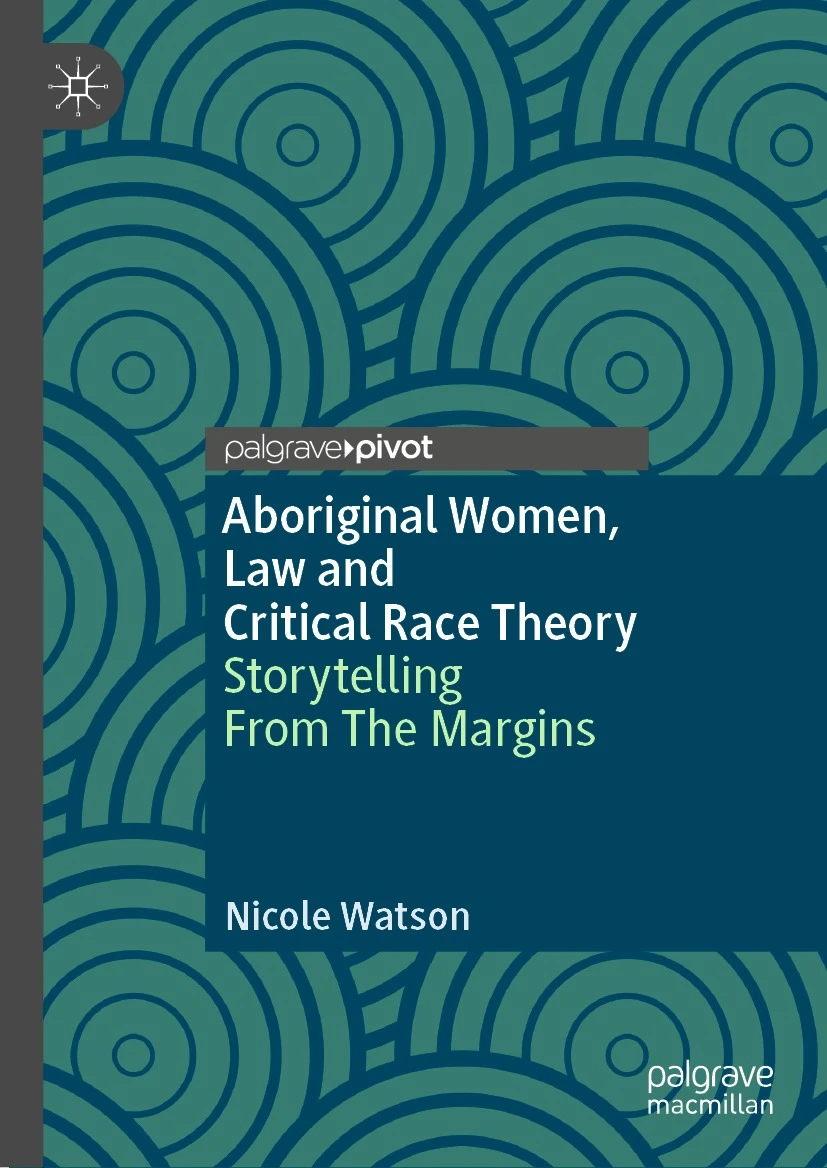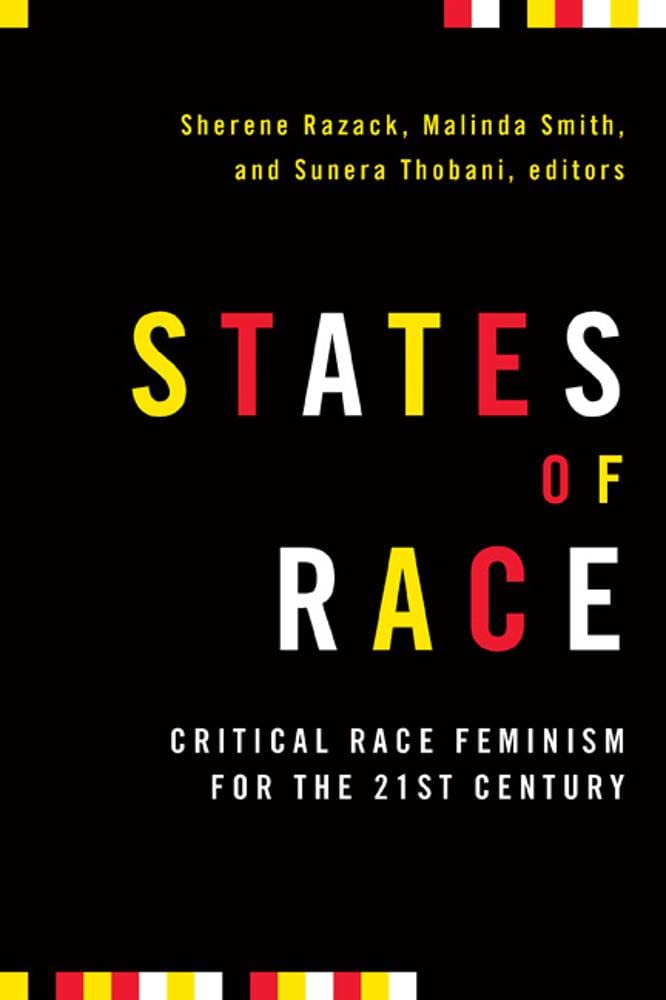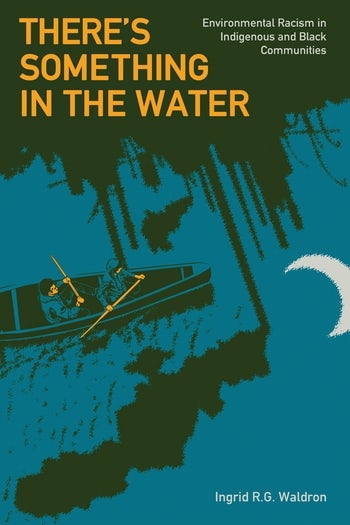- Critical Legal Theories
- Critical Race Theory
- Feminist Legal Studies
- Critical Disability Theory
- Queer+ Legal Theory
Book Collections
-
Celebrating Black VoicesLakehead Library-curated book collection featuring Black authors
Not sure what search terms to use? Try words and phrases like:
- Systemic Racism
- Intersectionality
- Institutional Racism
- BAME
- CRT
- BIPOC
eBook Collections
-
Canadian Critical Race Theory by Carol A. Aylward
Considering the role of race in litigation and developing critical race litigation strategies to address the issue, this study documents a growing body of work designed to move beyond theory and into practical application. -
Racism and Justice by Sean P. Hier, Daniel Lett & B. Singh Bolaria (Editors)
Exploring the prospect for "postraciality," this anthology of essays seeks to inform discussion and debate about the possibility of postracial politics--those that are neither oblivious to the importance of racial classification nor the persistence of racism and injustice. Conceptualizing this type of politics as a set of interrelated institutional and cultural changes that can neither be separated from historical relations nor reduced to the past, this compendium collectively prioritizes complexity over simplicity, progress over retrenchment, unity over diversity, and polemics over dogmatism. -
Race, Space, and the Law by Sherene Razack, Malinda Smith, Sunera Thobani (Editors)
Race, Space, and the Lawbelongs to a growing field of exploration that spans critical geography, sociology, law, education, and critical race and feminist studies. Writers who share this terrain reject the idea that spaces, and the arrangement of bodies in them, emerge naturally over time. Instead, they look at how spaces are created and the role of law in shaping and supporting them. They expose hierarchies that emerge from, and in turn produce, oppressive spatial categories. Each example demonstrates that "place," as a Manitoba Court of Appeal judge concluded after analyzing a section of the Indian Act, "becomes race." -
Scratching the Surface by Enakshi Dua & Angela Robertson (Editors)
Scratching the Surface brings together 14 anti-racist feminists who examine ways in which race and gender interact to shape the lives of women of colour in Canada. This collection of articles covers a broad range of topics such as the impact of colonialism and its associated discourses on First Nations and other groups of colonized women; racism in the Canadian labour movement; the impact of globalization on women of colour; the ways in which the institution of the nuclear family shapes racism; sexism in communities of colour; and the ways in which the women's movement can create an anti-racist praxis.
-
Race, Rights and the Law in the Supreme Court of Canada by James W. St. G. Walker (Editor)
Four cases in which the legal issue was "race" -- that of a Chinese restaurant owner who was fined for employing a white woman; a black man who was refused service in a bar; a Jew who wanted to buy a cottage but was prevented by the property owners' association; and a Trinidadian of East Indian descent who was acceptable to the Canadian army but was rejected for immigration on grounds of "race" -- drawn from the period between 1914 and 1955, are intimately examined to explore the role of the Supreme Court of Canada and the law in the racialization of Canadian society. -
The Colonial Problem by Monchalin, Lisa
In the Canadian criminal justice system, Aboriginal peoples are overrepresented as both victims and offenders. The Aboriginal incarcerated population in Canada is rising each year and Aboriginal people are twice as likely to become victims of assaults when compared to non-Aboriginal people. In response, the Canadian state has framed the disproportionate victimization and criminalization of Aboriginal peoples as being an "Indian problem." -
Colour-Coded by Constance Backhouse
Historically Canadians have considered themselves to be more or less free of racial prejudice. Although this conception has been challenged in recent years, it has not been completely dispelled. in Colour-Coded, Constance Backhouse illustrates the tenacio -
Looking White People in the Eye by Sherene Razack
In this book Sherene Razack explores what happens when whites look at non-whites, and in particular at non-white women. Most studies examining this encounter between dominant and subordinate groups focus on how it occurs in films, books, and popular culture. In contrast, Razack addresses how non-white women are viewed, and how they must respond, in classrooms and courtrooms. -
Racisms in a Multicultural Canada by Augie Fleras
In acknowledging the possibility that as the world changes so too does racism, this book argues that racism is not disappearing, despite claims of living in a post-racial and multicultural world. -
Redefining Equality by Neal Devins (Editor); Davison M. Douglas (Editor)
This book brings together essays from a distinguished group of scholars, presenting an array of views about the meaning of equality and providing perspectives on the on-going debates about it. -
Theorizing Anti-Racism
"This collection is the product of a continuing conversation. The text was preceded in September 2007 by a scholarly workshop held in Toronto, Ontario, organized with the support of the Social Sciences and Humanities Research Council of Canada (SSHRC), Queen's University, and York University.
-
Advancing Equality by Jody Heymann et al
In a world where basic human rights are under attack and discrimination is widespread, Advancing Equality reminds us of the critical role of constitutions in creating and protecting equal rights. Combining a comparative analysis of equal rights in the constitutions of all 193 United Nations member countries with inspiring stories of activism and powerful court cases from around the globe, the book traces the trends in constitution drafting over the past half century and examines how stronger protections against discrimination have transformed lives. -
Postmodern Legal Movements by Gary Minda
A wide-ranging and comprehensive survey of modern legal scholarship and the evolution of law in America What do Catharine MacKinnon, the legacy of Brown v. Board of Education, and Lani Guinier have in common? All have, in recent years, become flashpoints for different approaches to legal reform. In the last quarter century, the study and practice of law have been profoundly influenced by a number of powerful new movements; academics and activists alike are rethinking the interaction between law and society, focusing more on the tangible effects of law on human lives than on its procedural elements. -
#identity by Abigail De Kosnik; Keith Feldman
Since its launch in 2006, Twitter has served as a major platform for political performance, social justice activism, and large-scale public debates over race, ethnicity, gender, sexuality, and nationality. It has empowered minoritarian groups to organize protests, articulate often-underrepresented perspectives, and form community. It has also spread hashtags that have been used to bully and silence women, people of color, and LGBTQ people. #identity is among the first scholarly books to address the positive and negative effects of Twitter on our contemporary world.
-
The SAGE Handbook of Race and Ethnic Studies by Patricia Hill Collins and John Solomos (Editors)
What is the state of race and ethnic studies today? How has the field emerged? What are the core concepts, debates and issues? This panoramic, critical survey of the field supplies researchers and students with a vital resource. It is a rigorous, focused examination of the central questions in the field today. The text examines: The roots of the field of race and ethnic studies. The distinction between race and ethnicity. Methodological issues facing researchers. Intersections between race and ethnicity and questions of sexuality, gender, nation and social transformation. The challenge of multiculturalism. -
Racisms by Steve Garner
Racisms: An Introduction introduces practical methods which enable students to think coherently and sociologically about this complex feature of the global landscape. Steve Garner argues that there is no single monolithic object of analysis but rather a plural set of ideas and practices that result in the introduction of race into social relations. -
Race and Criminal Justice by Hindpal Singh Bhui (Editor)
This text delivers a comprehensive overview of race and ethnicity across the criminal justice system. It unpacks terms such as ′race′, ′diversity′ and ′multiculturalism′ to equip students with a thorough understanding of this complex subject area. Featuring chapters by leading experts, Race and Criminal Justice provides a specialist introduction to each area of the criminal justice system, including police, prosecution, prisons and probation. It also features stimulating discussion of contemporary issues, such as criminal justice responses to refugees and asylum seekers, and the experiences of Muslims within the criminal justice system post-9/11 and 7/7.
Select Articles
-
Who's afraid of critical race theory?An essay by Prof Bell, originally delivered at the David C Baum Memorial Lecture on Civil Liberties and Civil Rights.
Streaming Media
-
Unstandardized EnglishA podcast working against white epistemology and raciolinguistic ideologies
-
Race at WorkCandid conversations about the role race plays in our careers and lives. (Harvard Business Review)
-
Don't Call Me ResilientDon’t Call Me Resilient is a provocative new podcast about race from The Conversation. Host Vinita Srivastava takes you deep into conversations with scholars and activists who view the world through an anti-racist lens.
-
Friends Who ArgueFriends Who Argue 2-part interview with Joshua Sealy
on systemic racism viewed through the lens of historical jurisprudence. The Advocate's Society's most downloaded podcast of 2021.
-
What is Critical Race Theory (PBS NewsHour)According to University of California, Berkeley sociology professor Prudence Carter, critical race theory is a legal framework designed by scholars in the 1980s that explains how structural and racial disparities persist in American society.
-
Looking Back: Quong Wing (4:02)In 1912, a restaurant owner in Moose Jaw, Saskatchewan, is fined for breaking a law that prohibited Chinese business owners from hiring white women. With the support of the Chinese community, Quong Wing fights the case all the way to the Supreme Court.
-
Living in Hope: Viola Desmond's Story (54:30)This special presentation from CBC Radio's Sunday Edition is a dramatized account of a pivotal moment in Canadian race relations. On November 8, 1946 Viola Desmond refuses to move to the upstairs balcony in the Roseland Theatre, and is forcibly removed from the theatre and thrown in jail.
Other Links
-
Julius Alexander Isaac Moot ("The Isaac")The Julius Alexander Isaac Moot ("The Isaac") is a competitive, for-credit moot historically held at the Ontario Court of Appeal. It is named after the late Chief Justice of the Federal Court, Julius Alexander Isaac, who was the first Black judge to sit on the Federal Court of Canada. Every year since 2008, the Moot has focused on an area of law in which issues of equity and diversity arise.













